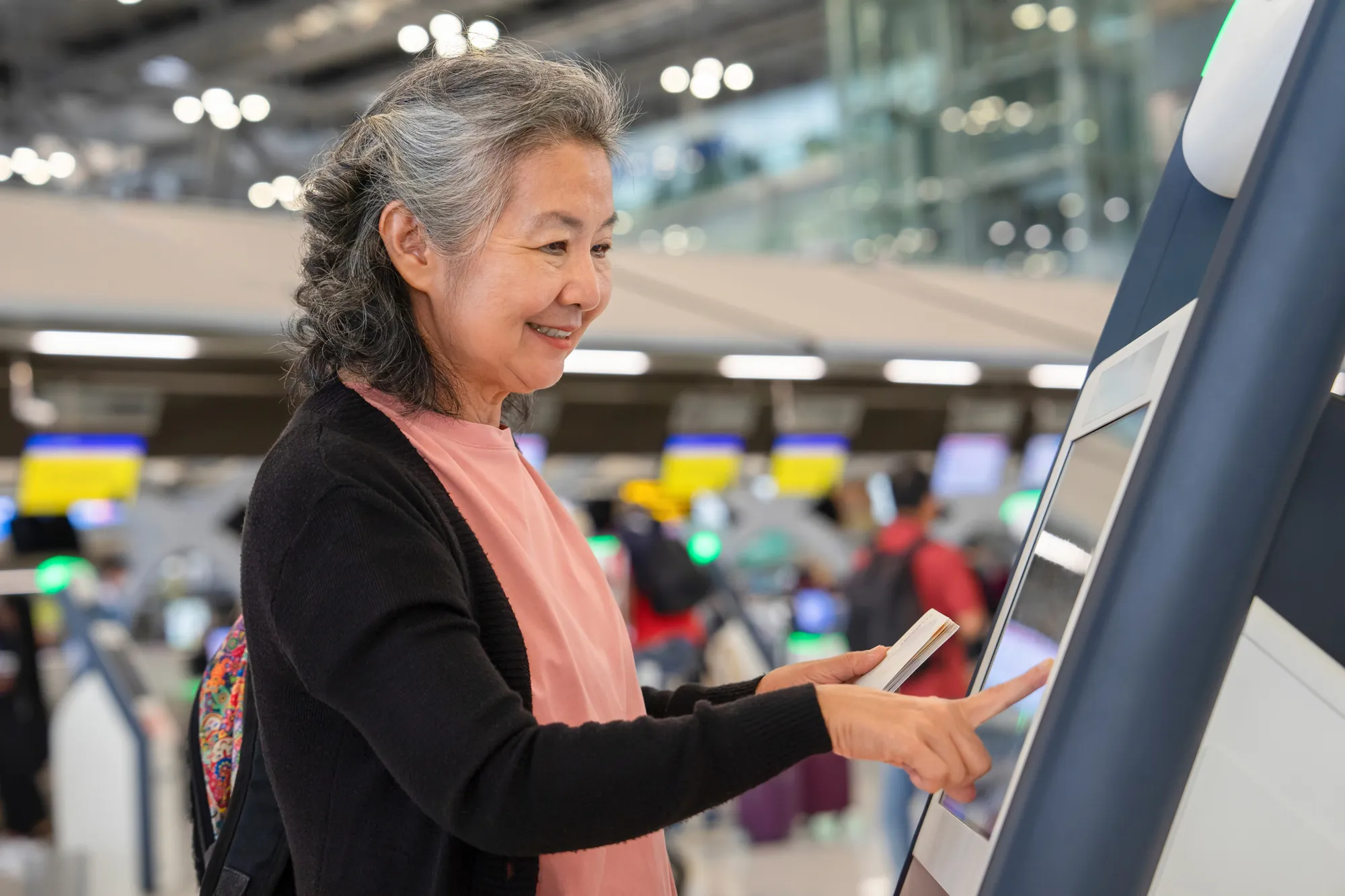In an era where convenience and efficiency are paramount, especially for corporate travelers, advances in airport technology are transforming air travel. From the moment passengers enter the terminal to the time they board their flight, airport technology plays a crucial role in enhancing every aspect of the journey. With developments in automated screenings, robotics, biometrics, and contactless check-in becoming more popular, airports are streamlining operations while improving passenger safety and experience.
Automated TSA Screenings
In March 2024, the Transportation Security Administration (TSA) began testing self-service security screenings at Harry Reid International Airport in Las Vegas. This marks the beginning of the TSA’s transition to more automated processes in an effort to reduce the number of agents required at each checkpoint. Instead of interacting with TSA agents physically, passengers greet and speak with personnel via a monitor while moving luggage on automated conveyors. The TSA remotely observes X-ray images from these screenings, which use a more sensitive detection system than agent-monitored imaging. If the test systems in Las Vegas are deemed a success, more airports could see these systems in the future.
Airport Robotics
Airport robotics is rapidly revolutionizing how airports operate with the market expected to skyrocket more than 16% to surpass $2 billion by 2029. These robots provide a wide range of services to enhance airport efficiency and the passenger experience, such as check-in assistance, baggage handling, cleaning, and even food delivery. However, security remains the most prominent application for airport robots. San Antonio International Airport introduced a robot to address door alarms while Toronto Pearson Airport began working with a prototype autonomous work vehicle that drives around the airport perimeter for security purposes. As the technology continues to evolve, we can expect to see even more innovative uses for airport robots, making them an integral part of the airport experience.
Digital ID
Biometrics and digital identification aren’t just being used for airport robotics. Some airports have started integrating these technologies into their check-in processes, security checkpoints, and boarding operations. Delta recently began offering biometric boarding passes to eligible flyers. Through this system, TSA PreCheck customers in select U.S. airports can check bags and work their way through security without showing a physical boarding pass or government ID. Passengers go to a bag drop station or security line with Delta’s Digital ID icon. Once there, they look into a camera, which encrypts the passenger’s facial biometrics. These are sent to U.S. Customs and Border Protection’s (CBP) matching service through secure channels. Then CBP verifies the passenger’s face from the service’s image gallery, allowing the passenger to proceed efficiently.
Contactless Technology
Contactless technology is reshaping the airport experience by minimizing physical contact and simplifying processes. This trend gained popularity due to social distancing and shows no signs of slowing. Online check-in remains a popular use case, as many airports allow passengers to check in for their flights using computers and mobile devices on the go. Passengers who travel to airports with smart baggage kiosks can handle their luggage without lengthy wait times by printing bag tags or using digital versions. Travelers simply drop off their bags and proceed to security checkpoints. Virtual queuing is also on the rise at security checkpoints as passengers can pre-book times ahead of their arrival.


